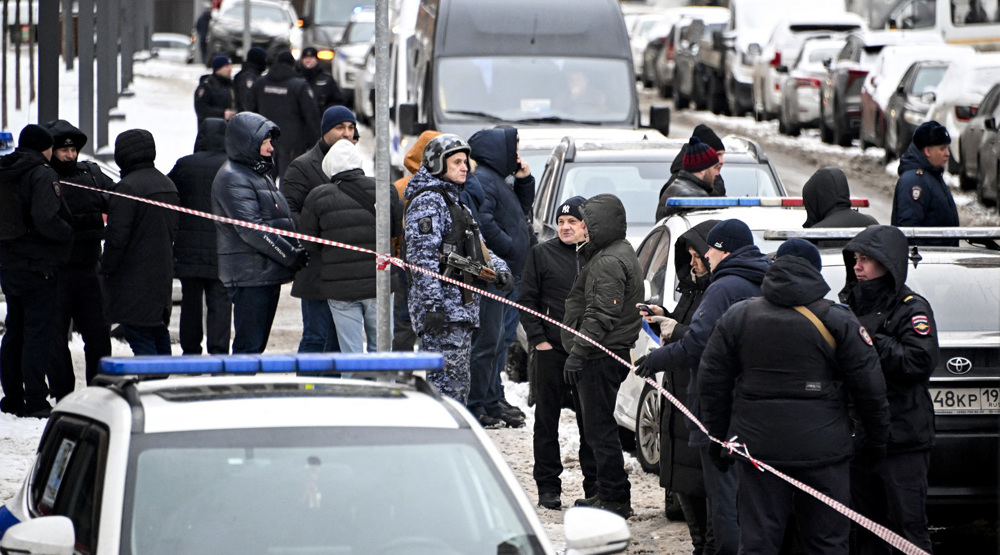Russia launches advanced nuclear-powered icebreaker to navigate in Arctic
Russia has launched a nuclear-powered icebreaker at the Baltic Shipyard in St. Petersburg in an apparent attempt to boost its ability to tap the Arctic’s commercial potential.
The icebreaker, dubbed the Ural, was floated out from the Baltic dockyard in the northwestern port city on Saturday, during a float out ceremony with hundreds of people in attendance, Russia's TASS news agency reported.
The ship, designed to be crewed by 75 people, is one of a trio, codenamed Project 22220, that when completed will be the largest and most powerful icebreakers in the world.
“Today we are floating the third ship, or the second serial one of Project 22220 - the Ural. They are the ships from new generation icebreakers of that class that we pin our hopes on in exploration of the Northern Sea Route. It is a principally new ship,” said Russian Deputy Prime Minister Yuri Borisov at the ceremony.
The advanced icebreakers are powered by a new module nuclear reactor, which is far more powerful than those mounted on previous vessels of Project 22220, said Baltic Shipyards Director General Alexei Kadilov.
He said that these ships were also equipped with a brand-new Russian-made electric propulsion system.

“And the most important thing is a new turbine which will provide 40-year operation for the icebreaker,” Kadilov added at a presser on Saturday.
The two other icebreakers, dubbed the Arktika and the Sibir vessels, are currently under construction at the Baltic Shipyards.
After being put into service, the trio will keep navigation in the Arctic open all year round, capable of breaking through ice up to three meters thick to make way for convoys of ships. They are also expected to help ensure transportation of hydrocarbons from the Yamal and Gydan peninsulas to Asia Pacific.
“Chernobyl on ice”
In May last year, Russia also unveiled the Akademik Lomonosov, a brown-and-mustard-painted floating nuclear power station, to meet its increasing electricity needs in its bid to develop oil resources in remote Arctic regions.
The floating power plant was also built in St. Petersburg.
The head of state nuclear power firm Rosatom, Alexei Likhachev, at the time hailed the Akademik Lomonosov as “a new world first,” which “underlines the undoubted leading role of Rosatom and the Russian nuclear energy sector on the global agenda.”
The 144-by-30-meter facility holds two reactors with two 35-megawatt nuclear reactors that are similar to those used to power the new icebreakers.

The floating power station, or as it is called the “Chernobyl on ice”, can produce enough electricity to power a town of 200,000 residents.
Last summer, it was towed to the port of Pevek in the autonomous Chukotka region in country’s extreme northeast. However, the Akademik Lomonosov was not built to supply sufficient power to the 5,000 living in Russia’s northernmost town.
The floating station is expected to give enough power to far-flung sites established deep into the Arctic responsible for finding oil and gas there.
According to the US Geological Survey, the Arctic holds oil and gas reserves roughly equivalent to 412 billion barrels of oil, around 22 percent of the world’s undiscovered oil and gas.
Iran reports further drop in annual inflation rate in December
Israel indicts two settlers over suspected spying for Hezbollah
Iran: US airstrikes on Yemen war crimes, violation of international law
Yemeni armed forces down F-18 fighter jet, repel US-UK attack: Spokesman
Iran warns against US-Israeli plot to weaken Muslims, dominate region
VIDEO | Public uproar in US against Israeli regime
‘Ghost town’: 70% of Jabalia buildings destroyed by Israel
Mother’s Day: Sareh Javanmardi’s inspiring journey as Paralympic champion and mother









 This makes it easy to access the Press TV website
This makes it easy to access the Press TV website